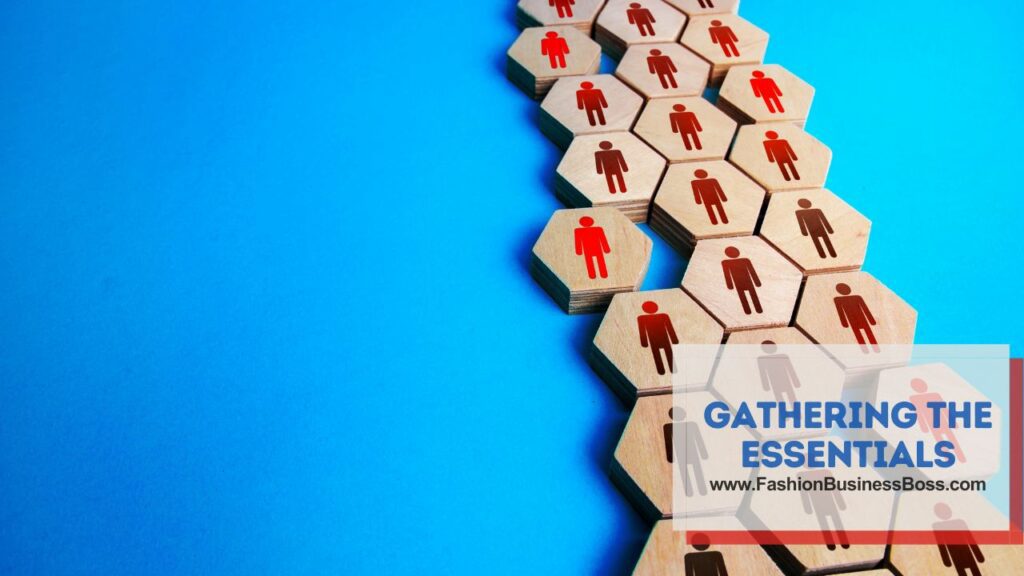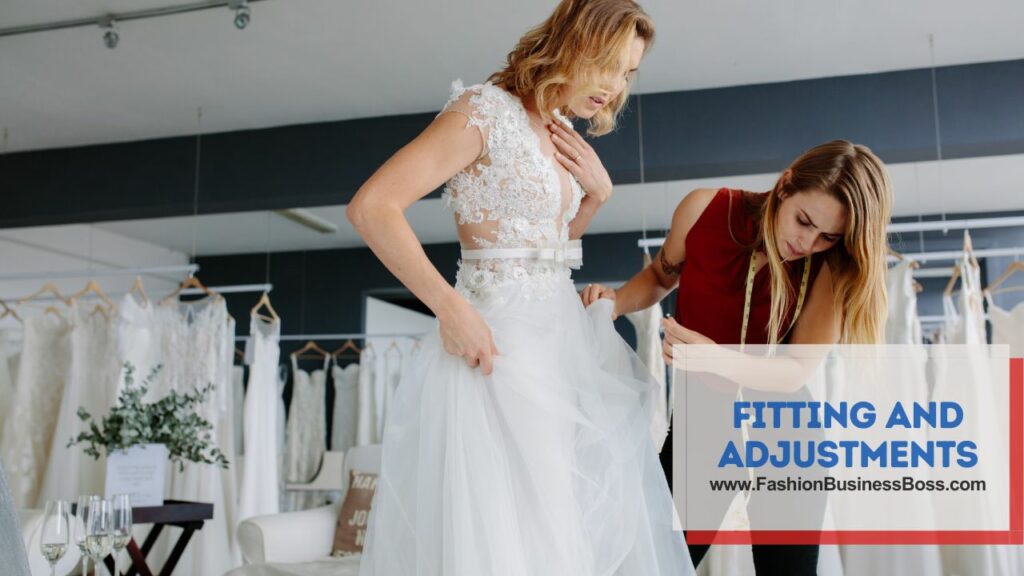Creating your own clothes has become a trend that allows individuals to express their unique style, save money, and reduce their environmental footprint. Whether you’re a seasoned seamstress or a complete novice, building your own clothes can be a satisfying and fulfilling journey.
Here are some essential tips for those eager to embark on the journey of building their own clothes. From selecting fabrics to mastering sewing techniques, crafting your unique wardrobe is both creative and fulfilling. Start today and let your style shine.
In this article, we will explore the steps and techniques to help you get started on your path to becoming your own fashion designer.
Gathering the Essentials

To start creating your own clothes, you must first gather the tools and materials you’ll need. These essential items include a sewing machine, fabric, thread, needles, scissors, and various other sewing supplies. It’s important to choose good-quality equipment to ensure that your sewing experience is more efficient and enjoyable.
A sewing machine is a fundamental tool for stitching fabric together quickly and neatly. Fabrics are the materials from which your clothing will be made, and they come in a wide range of types and textures. Thread is used to hold your fabric pieces together securely, while needles are the small, pointed tools that help you stitch. Scissors are necessary for cutting fabric and other materials precisely, and additional sewing supplies like pins, measuring tape, and seam rippers aid in the sewing process.
By gathering these essential items, you’ll be well-prepared to begin your clothing-making journey, making the entire process smoother and more manageable.
Read more about: Price It Right: Boutique Clothing Pricing
Learning the Basics
To create your own clothing effectively, it’s essential to grasp the fundamental principles of sewing. You’ll need to become familiar with basic sewing techniques, such as stitching, hemming, and sewing seams. These skills are the building blocks of clothing construction.
Stitching involves using a needle and thread to join pieces of fabric together securely. Hemming is the process of folding and sewing the edge of fabric to prevent it from fraying and give your garment a neat finish. Sewing seams is about connecting different fabric pieces along their edges to form the structure of your clothing.
Don’t worry if you’re new to sewing; there are plenty of easily accessible resources to help you learn. You can find instructional videos, online classes, and informative books that explain these essential sewing techniques in a straightforward manner. Taking the time to acquire these basics will set a solid foundation for your clothing-making journey and improve your sewing skills over time.
Selecting Your Patterns
Patterns serve as the essential blueprint for creating your clothing pieces. They are like maps that guide you through the process of making garments. Patterns are available for a wide variety of clothing items, including dresses, shirts, pants, and more. Some individuals even opt to create their own unique patterns.
When choosing a pattern, consider both your skill level and the style you want to achieve. If you’re new to sewing, it’s wise to start with simpler patterns that have clear instructions. As you gain confidence and experience, you can progress to more complex designs. Ensure that the chosen pattern matches your skill level to avoid frustration or difficulties during the sewing process.
If you have a specific style in mind that you want to create, look for patterns that align with that aesthetic. Different patterns can give you different looks, so selecting the right one is crucial to achieving your desired outcome. By carefully choosing your patterns, you’ll set the stage for a clothing-making venture tailored to your preferences and abilities.
Choosing Fabrics

Picking the appropriate fabric is a crucial part of making clothing. Fabrics come in various types, each with its own unique qualities, like how stretchy they are, how long they last, and their texture. These characteristics impact how your clothing will look, feel, and fit.
To make the best fabric choice, it’s important to do some research and consider your project and personal preferences. For instance, if you’re making a stretchy, form-fitting outfit like leggings, you’d want a fabric with good stretch. If durability is a priority, opt for sturdy fabrics for long-lasting wear.
Texture matters too; some fabrics feel smooth, while others may be rough or textured. Think about the comfort and appearance you desire for your clothing. A soft, silky fabric might be great for a delicate dress, while a rugged fabric could be perfect for a durable jacket.
Taking your time to select the right fabric ensures that your clothing project will turn out as intended, with the look, feel, and functionality that suits your needs.
Read more about: Price Points and Ponderings: Wholesale Clothing Insights
Cutting and Sewing
When you’ve got your pattern and fabric prepared, the next step is cutting and sewing. This phase demands patience and precision because getting it right is vital for a nicely made garment. Pay close attention to detail and follow the instructions in your chosen pattern diligently; don’t be in a hurry.
First, you’ll use your pattern as a guide to cut your fabric pieces. It’s essential to cut them accurately to match the shapes and sizes specified in the pattern. Mistakes at this stage can affect the fit and appearance of your clothing.
Once you’ve cut your fabric, it’s time to start sewing. Follow the step-by-step instructions in your pattern, which will guide you on how to sew the pieces together. Be sure to use the correct stitching techniques and take your time to ensure neat and secure seams.
Remember, precision and patience are your allies during this phase. Rushing can lead to errors, so stay focused and methodical. By adhering to your pattern’s guidance and maintaining accuracy, you’ll be on your way to creating a well-crafted garment that you’ll be proud to wear.
Adding Personal Touches
Creating your own clothing offers you the freedom to infuse personal touches and customizations into your garments. This is where your unique style can truly shine. You can think of it as putting your signature on your clothing creations.
One way to add personal flair is by selecting distinctive buttons for your garments. Buttons come in various shapes, sizes, and designs. Choosing buttons that resonate with your style can make a significant difference in the overall look of your clothing.
Another option is embroidery. Embroidering patterns, motifs, or even your initials onto your clothing can make it one-of-a-kind. Embroidery adds a personal and artistic touch to your creations.
Exploring other decorative elements such as lace, ribbons, or fabric paint can also enhance your clothing’s individuality. You have the creative freedom to experiment and make your garments uniquely yours.
By incorporating these personal touches and customizations, your clothing will reflect your personality and style preferences. It’s a wonderful way to express yourself and make your creations truly special.
Fitting and Adjustments

Once you’ve finished the initial assembly of your garment, it’s time to evaluate the fit. Trying on the clothing is a crucial step to ensure it matches your body comfortably. Achieving the right fit is essential for your clothing to look and feel good when you wear it.
As you try on your garment, pay attention to how it sits on your body. Check for any areas where it may feel too tight, too loose, or uncomfortable. These observations will help you identify the areas that require adjustments.
Common adjustments involve altering seams, hems, or other parts of the garment. If it’s too tight, you may need to release some seams or make them larger. If it’s too loose, taking in the seams can provide a better fit. Hems can be raised or lowered as needed to ensure the right length.
Remember, the goal is to make your clothing fit you comfortably and flatteringly. By making these necessary adjustments, you’ll ensure that your handmade garment not only looks good but also feels comfortable to wear.
Read more about: Ready to Retail: A Guide for Clothing Entrepreneurs
Finishing Touches
After achieving a satisfactory fit and appearance for your clothing, the final step is to add the finishing touches. These are the small details that complete your garment and make it ready to wear.
Finishing touches may include adding buttons, zippers, or any closures needed for your specific design. Buttons come in various styles, so choose ones that complement your garment’s overall look. Zippers provide ease of wear and can be added to openings like the front of a dress or the fly of pants.
Ensure that these finishing elements are securely attached to your clothing. Buttons should be sewn tightly, and zippers should operate smoothly. Attention to these details ensures that your clothing is not only aesthetically pleasing but also functional.
These final touches add both style and functionality to your handmade clothing. Once completed, your garment will be ready for you to proudly wear and show off your sewing skills.
Care and Maintenance
Taking proper care of your handmade garments is essential to keep them in good condition and ensure they last a long time. Following care instructions is crucial to maintain the quality and appearance of your clothing.
The care of your garments primarily depends on the fabrics you’ve used. Different fabrics have unique needs. Always check the care labels on your fabric or follow the instructions provided when you purchased it.
Common care instructions may include washing, drying, and ironing recommendations. Some fabrics require gentle hand washing, while others are suitable for machine washing. Temperature settings and detergents may also vary, so it’s essential to pay attention to these details.
Drying methods are another consideration. Some fabrics should be air-dried, while others can withstand machine drying. Using the appropriate heat settings helps prevent damage to your clothing.
Ironing instructions should be followed to maintain the fabric’s integrity and remove wrinkles effectively.
By adhering to these care instructions, you’ll ensure that your handmade garments remain in excellent condition and continue to look their best, allowing you to enjoy them for a long time to come.
Conclusion
Building your own clothes is a fulfilling and creative endeavor that allows you to express your individuality and style. With the right tools, skills, and a dash of creativity, you can create unique, personalized garments that are sure to turn heads. Whether you’re sewing for practicality or passion, remember that practice makes perfect.
Frequently Asked Questions

Q: What are the benefits of building your own clothes?
A: Building your own clothes allows for personalized style, better fit, and the satisfaction of creating something unique.
Q: Is prior sewing experience needed to get started?
A: While prior experience helps, there are beginner-friendly resources and classes available to learn essential sewing skills.
Q: Where can I find sewing patterns for different garments?
A: Sewing patterns can be found in craft stores, online marketplaces, and even some libraries. There are patterns available for various skill levels.
Q: How can I choose the right fabric for my clothing project?
A: Consider the garment’s purpose, desired drape, and personal preferences when selecting fabric. Research and ask for recommendations if needed.
Q: What if my handmade clothing doesn’t fit well?
A: Making a muslin (test garment) before using your chosen fabric can help identify fit issues. You can also make adjustments during the sewing process to improve the fit.
To learn more about starting your own clothing business, check out my startup documents here.
The information provided by FashionBusinessBoss.com (“The Site”) is for general informational purposes only. All information on the Site is provided in good faith, however, we make no representation or warranty of any kind, express or implied, regarding the accuracy, adequacy, validity, reliability, availability or completeness of any information on the Site. Under no circumstance shall we have any liability to you for any loss or damage of any kind incurred as a result of the use of the Site or Reliance on any information provided on the Site. Your use of the Site and your reliance on any information on the Site is solely at your own risk. This blog post is for educational purposes only and does not constitute legal advice. Please consult a legal expert to address your specific needs. Terms and Conditions. (https://fashionbusinessboss.com/terms-and-conditions/)

Meet Shawn Chun: Entrepreneur and Fashion Business Fan.
I’m a happy individual who happens to be an entrepreneur. I have owned several types of businesses in my life from a coffee shop to an import and export business to an online review business plus a few more and now I create online resources for those interested in starting new ventures. It’s demanding work but I love it. I do it for those passionate about their business and their goals. That’s why when I meet a designer or boutique owner at a craft fair, farmers market, retail location or anywhere else I see myself. I know how hard the struggle is to retain clients, find good employees and keep the business growing all while trying to stay competitive.
That’s why I created Fashion Business Boss: I want to help fashion business owners like you build a thriving business that brings you endless joy and supports your ideal lifestyle.

